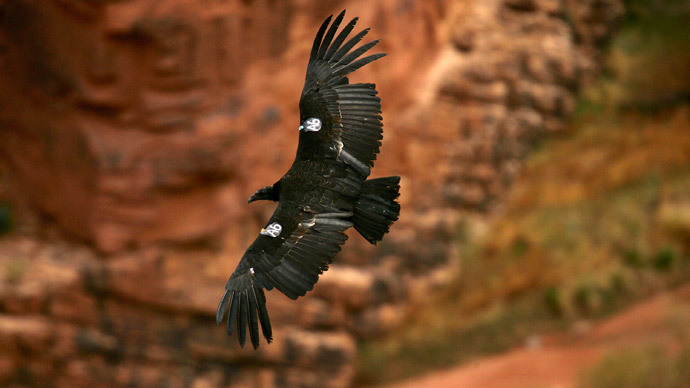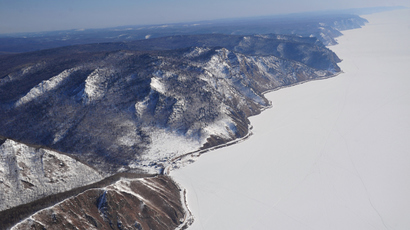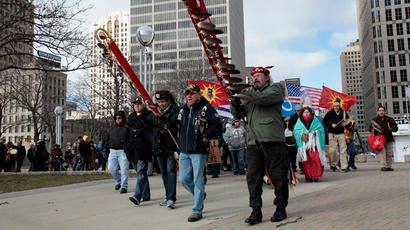Native American burial ground, village site destroyed for luxury California homes

A 4,500-year-old Native American burial ground and village site was found in California, but the contents were eventually destroyed, reburied, and paved over for construction of multimillion-dollar homes, the San Francisco Chronicle reported.
Archaeologists say the 300-foot-long Coast Miwok site held 600 human burials as well as tools, rare hunting materials, musical instruments, game pieces, ritualistic stone objects, animal remains, the largest collection of bear bones found in a prehistoric site in the Bay Area, and even a ceremonial condor burial that suggested the bird was kept as a pet. The remnants were quietly examined and categorized but ultimately decimated and reburied at an undisclosed location, scientists say, ahead of construction on a $55 million home development in Larkspur, California.
"This was a site of considerable archaeological value," said Dwight Simons, a consulting archaeologist who assessed bones at the site. "My estimate of bones and fragments in the entire site was easily over a million, and probably more than that. It was staggering."
Several archaeologists familiar with the site said it was the “largest, best-preserved, most ethnologically rich American Indian site found in the Bay Area in at least a century,” The Chronicle wrote. Yet the carbon-dated record in the soil of the site is now long gone.
"It should have been protected," said Jelmer Eerkens, a professor of archaeology at UC Davis who had visited the site. "The developers have the right to develop their land, but at least the information contained in the site should have been protected and samples should have been saved so that they could be studied in the future."
Who is responsible and who had the right to claim the site’s contents, though, are in high dispute. The developers say supposed tribal descendants of the Miwok did not want to grounds to be studied or picked apart. Archaeologists say the developer demanded the scientists studying the grounds operate with a nondisclosure agreement, therefore keeping the contents of and plans for the site under wraps until it was too late to protest the development’s progression.
Larkspur Land 8 Owner LLC, the developer of the site, followed state rules in bringing in archaeologists and Native American monitors to study the remains before building began, they told The Chronicle.
For a year and a half, Holman & Associates Archaeological Consultants was hired to analyze the site. Members of the Federated Indians of Graton Rancheria – designated the most likely descendants of the indigenous people – joined the researchers. They decided the findings should be removed and reburied.
"The philosophy of the tribe in general is that we would like to protect our cultural resources and leave them as is," said Nick Tipon, of the Sacred Sites Protection Committee of the Federated Indians of Graton Rancheria. "The notion that these cultural artifacts belong to the public is a colonial view."
The developer, the city’s planning officials, and the archaeology consulting firm all put the decision on the shoulders of the tribal leaders.
"We coordinated the entire time with the tribe and the archaeological team to make sure it was a collaborative effort and that things were handled in accordance with the tribe's wishes," said Brian Olin, an official with a company associated with the development.
Cultural sites are often asked to be protected by American Indians, while archaeologists want to collect and preserve the artifacts. California and federal law attempts to balance the two concerns.
Nevertheless, the chairman for the 1,300-member tribe said it was nobody’s business what they wanted to do with the site.
"Our policy is that those things belong to us, end of story," said Greg Sarris. "Let us worry about our own preservation. If we determine that they are sacred objects, we will rebury them because in our tradition many of those artifacts, be they beads, charm stones or whatever, go with the person who died. ... How would Jewish or Christian people feel if we wanted to dig up skeletal remains in a cemetery and study them? Nobody has that right."
Archaeologists maintain that something could have been done to preserve the shell mound. They say the developers’ secrecy in the process – possibly to avoid alarming prospective residents that their house rests on top of a Native burial ground – and prohibition against radiocarbon dating and DNA testing did not allow for confirmation of a genetic link to Graton Rancheria tribe members.
"In my 40 years as a professional archaeologist, I've never heard of an archaeological site quite like this one," E. Breck Parkman, the senior archaeologist for the California State Parks, told The Chronicle. "A ceremonial condor burial, for example, is unheard of in California. This was obviously a very important place during prehistory."
The site will include 42 senior housing units, eight senior cottage homes, six affordable-housing townhouses, and 29 single-family homes, The Chronicle reported. They are expected to sell for $1.9 million to $2.5 million starting this fall.














